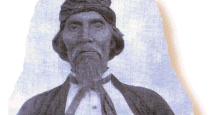
A leader is chosen for a song and the other men provided a chorus.For some dances, the male dance leader carries a handheld rattle – commonly made from box turtle shells, gourds or coconuts. Men sing stomp dance songs in a call-and-answer format. The Stomp Dance is not meant to be a grueling and physically challenging event, but almost every participant on the grounds will dance most of the night.

Usually a round of dancing continues until at least four songs are completed by the dance leader, and then everyone returns to their seats until another singer is called on to “lead out.” There is usually a few minutes of rest between each leader, but the breaks may stretch longer if there are fewer people present to participate. The dancers circle the fire in counterclockwise direction with deliberate stomping steps set to the rhythm created by the women with their shell shakers.ĭepending on the size of the community and the number of visitors in attendance, the number of people joining the circle may range from less than ten up to several hundred. The remaining dancers follow, alternating male-female in a continuous spiral around the central fire, with visitors, then young children, and the odd numbers trailing at the end. Every dance must have at least one woman with shakers, who falls into step immediately behind the song leader, to carry the rhythm.

The songs are typically performed in call and response form, in the native language. Each round is led by a selected man who has developed his own sequence of songs from the multitude of variations on traditional rhythms, melodies and lyrics, sometimes with personalized content in the mix. One of the male members of the community is given the job of calling out each song leader and all other participants to dance for each round. This medicine is intended for the physical and spiritual benefit of the members of the dance at the ceremonial ground. The medicine is made from specific roots and plants which have been ceremonially gathered by selected “medicine helpers” and prepared by the Heles Haya at dawn of the morning of the Dance. Participants who are making a religious commitment to the ceremony will begin fasting after midnight, “touch medicine” at four different times during night, and are obligated to stay awake the whole night. The home fires in outlying Cherokee communities were extiguished before the ceremonies and re-lit from the coals of the fire kindled during the Green Corn dances.Ī night of dancing typically starts well after dark and continues until dawn of the next day, with many rounds of dancing throughout the night. During traditional Green Corn ceremonies, the Cherokee carried the coals of the central fire in Keetoowah to all the Cherokee communities the coals were used to kindle the ceremonial fires for the dances in each Cherokee City or township. The dance symbolizes the dispersal of the sacred fire given to the Keetoowah people by the Creator and the Thunder Beings in their ancient legends. During this dance, all of the dancers shout ye-lu-le and move towards the fire in the center of the sacred dance circle. The dance is called ye-lu-le which means “to the center”. It is also called the Leading Dance by many Shawnees, but most simply call it the “Stomp Dance.”ĭuring the Green Corn Ceremony as practiced by the Cherokee, one of the two social dances performed is of ancient origin, and originated from the mother city of Keetoowah. In the native Shawnee language, the dance is called Nikanikawe which refers to a dance involving friends or nikane. This usually refers to the exciting, yet meditative effect the dance and the medicine have on the participants. In the native Muskogee language the dance is called Opvnkv Haco, which can mean “drunken,” “crazy,” or “inspirited” dance. The term “Stomp Dance” is an English term, which refers to the “shuffle and stomp” movements of the dance. To the Cherokees as well as Muscogee Creeks and other Southeastern Indians the Stomp Dance is affiliated with the Green Corn Ceremony. The Stomp Dance is a ceremony that contains both religious and social meaning.


 0 kommentar(er)
0 kommentar(er)
